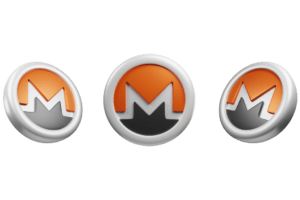The fascinating journey of cryptocurrency mining has hit the headlines for some time. A process that involves generating new tokens or coins through the power of computers. Unlike traditional mining for precious metals like gold, this digital endeavour only requires an internet connection, compatible devices, and the right software. Picture it as a virtual excavation, where miners utilize their computers to solve cryptographic problems and, in return, are rewarded.
In 2009, the digital landscape witnessed a revolutionary disruption with the introduction of Bitcoin, the pioneer of cryptocurrencies. Operating on open-source, peer-to-peer technology, Bitcoin operates on a decentralized public ledger, making it immune to the control of intermediaries or central authorities.
Curious about diving into the world of cryptocurrency mining? Discover the fundamentals of kickstarting your mining journey, including understanding the associated costs of this captivating venture. And in this case, Bitcoin mining.
Get the top-tier Bitcoin Mining Hardware
To start mining, you’ll need a mining setup. In the early days of Bitcoin, anyone could mine using their computer’s CPU. Later, high-speed graphics cards were introduced, but mining on a desktop PC has become impractical due to sophisticated hardware. As more people joined mining, the difficulty increased, leading to the development of specialized hardware for Bitcoin and similar currencies.
Key components of Bitcoin mining include Graphic Processing Units (GPUs), Field-Programmable Gate Arrays (FPGAs), and Application-Specific Integrated Circuits (ASICs). ASICs, for example, are specialized computer chips designed for efficient and quick Bitcoin mining with lower energy consumption, playing a pivotal role in the mining process.
Join a Bitcoin Mining Pool
Now that you’re all setup, what next? Join a reputable Bitcoin mining pool, as this enhances your chances of turning a profit by combining your resources with fellow miners in a collaborative effort. In a Bitcoin mining pool, a group of miners joins forces, shares their hashing power, and divides the rewards based on the percentage of shares they contribute to solving a block.
Download Bitcoin Mining Software
Once you have your Bitcoin mining hardware, the next step is to get a specialised mining program. Bitcoin mining software manages tasks for miners, gathers their results, and updates information on the Blockchain. It also keeps track of essential statistics like hash rate, temperature, and average mining speed.
Most mining software is freely available for download and works on various operating systems. Options include command-line programs like BFGminer and CGminer, as well as those with a Graphical User Interface (GUI) for user convenience. Furthermore, some mining pools offer their own software for a seamless experience.
Create a Bitcoin Wallet
After mining bitcoins, the next step is to secure them in a bitcoin wallet. You can either use an existing wallet or create one. Download the wallet to your PC, and bitcoins are transferred through a unique address.
Each Bitcoin address comes with a private key and a public key. To receive bitcoins, you share your public key. While every BTC address is public and its transactions are traceable, the private key remains private and is used for sending transactions. Losing the private key means losing your bitcoin permanently.
To safeguard your Bitcoin wallet, consider two-factor authentication or keeping it offline, protecting it from potential threats.
Proceed to Mine
After finishing the setup, link your Bitcoin wallet to your mining system. Now, you can begin to earn through mining Bitcoin. The process involves verifying Bitcoin transactions through two SHA256 hash function checks for network security. As a reward, miners receive newly issued Bitcoin and transaction fees for providing the needed processing power.
Stay Updated with Crypto News
Finally, to maintain the profitability of your Bitcoin Mining operation, it’s essential to keep track of fluctuations in mining difficulty and Bitcoin price trends.
Key Factors and Risks in Bitcoin Mining
- Financial Risks: Failing to make a profit poses financial challenges.
- Mining Equipment Maintenance:Ensure proper ventilation to prevent components from burning out due to overheating.
- Electrical Grid Assessment:Evaluate the limitations of your electrical grid to avoid issues.
- Regular Maintenance: Keep mining devices healthy by regularly maintaining them against dust and external conditions.
- Environmental Impact:Be mindful of the environmental effects associated with Bitcoin mining.
Parting Shot
Typically, mining cryptocurrencies involves solving complex cryptography problems to earn rewards in the form of digital currency. Setting up an efficient Bitcoin mining rig that can compete with the ever-changing network trends can be costly.
Therefore, a practical approach would be acquiring appropriate hardware and software and then considering joining a mining pool where you can collaborate with miners alike. This would make the process more accessible and rewarding for everyone involved.
Image Source: Shutterstock
Disclaimer: This article is provided for informational purposes only. It is not offered or intended to be used as legal, tax, investment, financial, or other advice.









